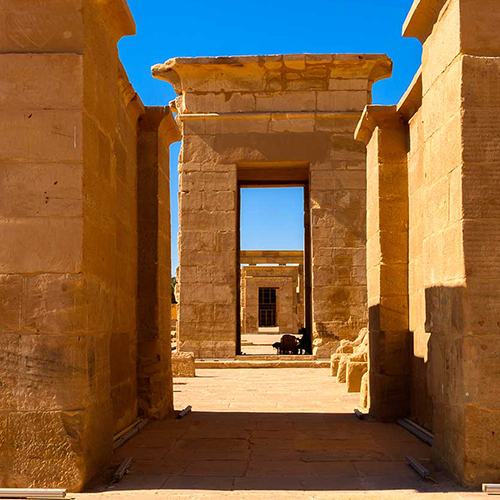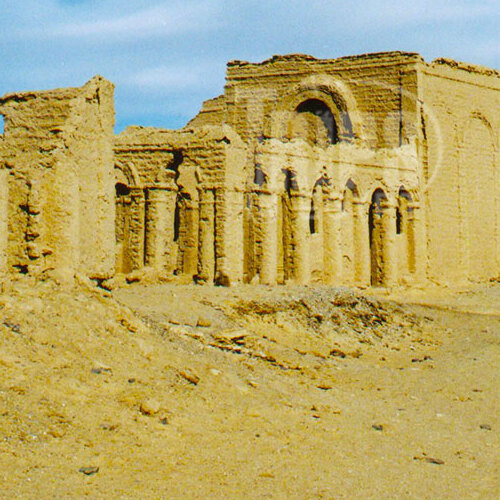No other nation in the world says ‘Welcome’ as often as the Egyptians, and every time, they mean it. While the ancient civilization of Egypt continues to amaze, contemporary Egyptians are equally remarkable.
Fortress and Temple at Nadura
About The Temple
Fortress and Temple at Nadura, whose name translates to ‘The Lookout,’ is the site of a fortress and temple strategically situated atop a hill approximately 1.5 kilometers northeast of the center of El-Kharga in Egypt’s Kharga Oasis. The hill’s elevated vantage point offers spectacular panoramic views of the oasis, with prominent landmarks such as Hibis Temple and the el-Bagawat cemetery visible in the distance.
While the settlement of Nadura is now buried, the remains of two temples from the village still exist in a badly ruined state. The southern entrance wall of the main temple can still be observed on the hill’s summit.
The main temple at Nadura was constructed during the rule of Hadrian and Antoninus Pius in the 2nd century AD. A sandstone gate in the deteriorating southern enclosure wall leads to a courtyard, within which were the three rooms of the temple. Another smaller entrance was located in the northern wall.
The pronaos (anteroom) on the western side of the structure is among the few parts that remain visible. Unfortunately, the vestibule and sanctuary have largely disappeared, buried by sand. The pronaos’s façade, characteristic of its time, featured screen walls connected by columns and was adorned with figures and hieroglyphic inscriptions.
Determining the specific deities honored at Nadura has been challenging due to the degraded condition of the remaining reliefs. Various speculations have arisen since the early explorations of the temple. Some suggest that the goddess Mut may have been the primary deity, as she appears in several reliefs, along with Amun, Khonsu, Ihy, Thoth, and Bes. Others have associated the temple with Amun of Hibis, a local form of Amun worshiped at Hibis Temple.
In 2009, Yale University initiated the Nadura Temple Project, which aimed to provide a comprehensive epigraphic documentation of the reliefs and inscriptions at the site. Additionally, the project involved an archaeological and architectural survey of the site and the clearance of the mostly destroyed sanctuary area. The project’s findings indicate that the temple is most likely dedicated to Khonsu, the son of Amun and Mut, as he predominates the reliefs, particularly in a unique relief where he stands before Amun in a position of honor.
At one point, a Coptic church occupied the space outside the temple, and the entire structure was later repurposed as a Turkish fortress during the Mamluk and Ottoman Periods. Remains of the second uninscribed temple can be observed at the base of the hill, near the main road.
Created On 18 March, 2020
Updated On 26 Aug , 2024



